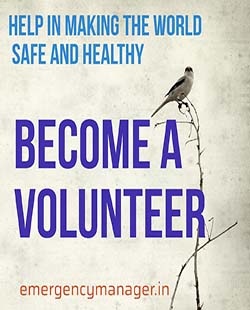
Do you suffer from a frequent cough or wheeze? Are you often short of breath when doing things like running errands or climbing stairs? Your lungs could be trying to tell you something. Learn if you are at risk for having COPD.
Chronic obstructive pulmonary disease (COPD), is a group of lung conditions in which there is breathing difficulties.
It includes
emphysema - a condition in which air sacs in lungs are damaged and
chronic bronchitis- a condition in which inflation to the airways is present.
How common is COPD ?
WHO reports that
- The Global Burden of Disease Study reports a prevalence of 251 million cases of COPD globally in 2016.
- Globally, it is estimated that 3.17 million deaths were caused by the disease in 2015 (that is, 5% of all deaths globally in that year).
- More than 90% of COPD deaths occur in low and middle-income countries.
CDC says that COPD makes breathing difficult for the
16 million Americans who have been diagnosed with COPD. Millions more suffer from COPD, but have not been diagnosed and are not being treated. COPD can limit your ability to work or even perform simple daily tasks.
Could you have COPD?
Check the causes.The main causes of COPD are
- tobacco smoke, so if you smoke or used to smoke, you are at a higher risk of having COPD.
- Exposure to air pollution in the home
- family history,
- respiratory infections like pneumonia also increase your risk
- Outdoor air pollution
- Occupational dusts and chemicals (vapours, irritants, and fumes)
Symptoms of COPD include:
- Frequent coughing or wheezing
- Long lasting cough with excess phlegm or sputum
- Shortness of breath
- Trouble taking a deep breath
- Frequent chest infections
If you experience these symptoms, you should discuss them with your physician.
How is COPD diagnosed?
COPD is diagnosed using a simple breathing test called spirometry.
![Photo]()
Pulmonary rehabilitation helps improve COPD symptoms and allows you to be active without shortness of breath.
How is COPD treated?
Treating your COPD can greatly improve your quality of life. Treatment options that your doctor may consider include:
- Quitting smoking. For people who smoke, the most important aspect of treatment is to stop smoking.
- Avoiding tobacco smoke and other air pollutants at home and at work.
- Medication. Symptoms such as coughing or wheezing can be treated with medication.
- Pulmonary rehabilitation, a personalized treatment program that teaches you how to manage your COPD symptoms to improve quality of life. Plans may include learning to breathe better, how to conserve your energy, and advice on food and exercise.
- Avoiding lung infections. Lung infections can cause serious problems in people with COPD.
- Certain vaccines, such as flu and pneumonia vaccines, are especially important for people with COPD.
- Learn more about vaccination recommendations. Respiratory infections should be treated with antibiotics, if appropriate.
- Supplemental oxygen from a portable oxygen tank may be needed if blood oxygen levels are low.
Input from CDC
..... .... Login with Google and support us
Thanks


 89
89
